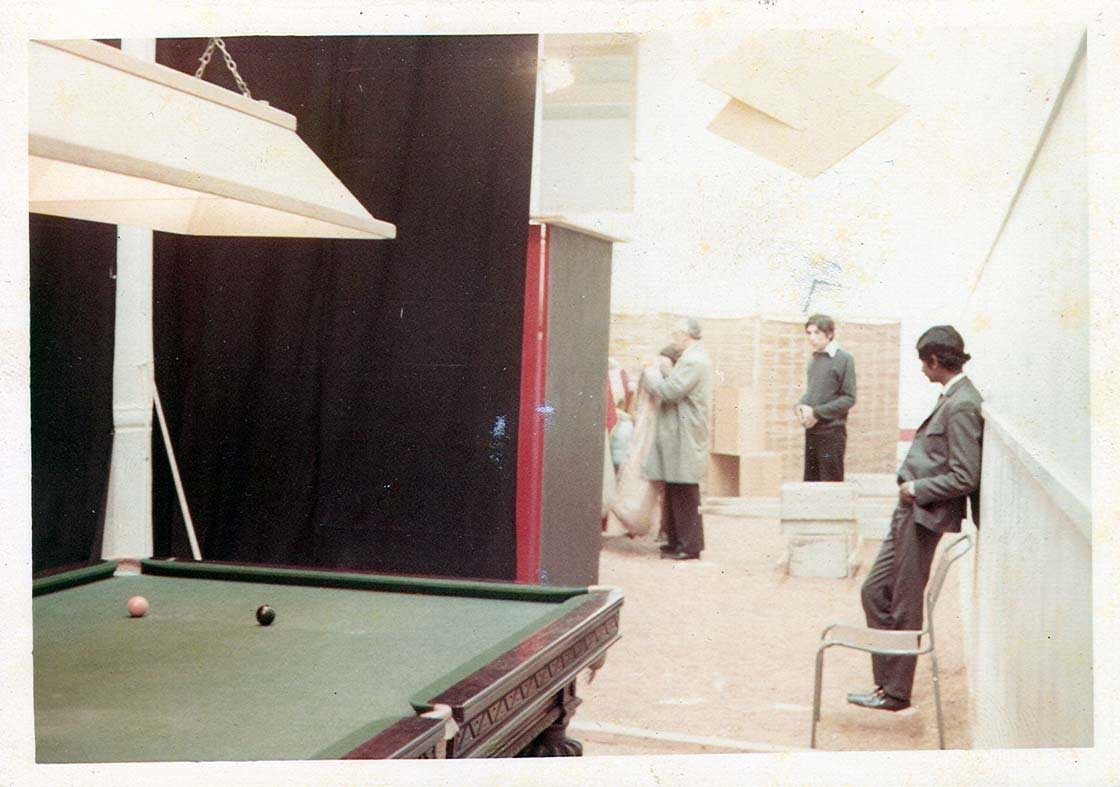While curatorial agendas have turned, in recent years, to the revisiting of postwar art beyond North America and Western Europe, recovering the history of these other ‘scenes’ has tended to eclipse the culture of international artistic exchange and migration that characterised much avant-garde art in the postwar period. Friends of London, curated by Pablo León de la Barra with Carmen Juliá, turns an effective spotlight on the largely forgotten history of Latin American artists in late-1960s and early-70s London, provoking questions about the nature of artistic internationalism, political art in a period of political repression and the marginality of experimental art existing beyond mainstream institutions.
Friends of London manages to create a picture of a moment where artistic experimentation existed as a self-defined alternative to the mainstream
Friends of London follows on from Juliá’s 2012 display for Tate Britain, which focused on the activity of four cosmopolitan London galleries of the 1950s and 60s: Gallery One, New Vision Centre, Indica and Signals. Here, Signals is presented as a meeting place for foreign and British artists beyond the Anglo-American axis. Reprints of Signals Newsbulletin stand in for the gallery’s early presentations of artists such as Brazilians Lygia Clark and Hélio Oiticica, and Venezuelan Jesús Rafael Soto, but after Signals’s closure, in 1966, the show moves quickly into the post-68 period, in which migration and exchange are marked by enforced, or self- imposed, exile. In Mexico, Brazil and then Chile, rightwing coups and authoritarian crackdowns saw artists flee their homes, finding temporary refuge abroad.
What is striking in Friends of London is the relative unimportance of national background and cultural identity in the work. This is still a world of itinerant avant-gardists, at odds with mainstream culture wherever they are from, tied by shared artistic commitments informed by the international counterculture, by Fluxus, the European-Latin American legacy of Neoconcretism, conceptualism and perfor- mance art. So, Argentinian David Lamelas is represented by a sculpture of scattered and arranged steel plates (28 Plaques Placed in Two Unconventional Forms, 1966–7/2013), first shown in Buenos Aires, but then re-presented as a graduation piece for his Saint Martins diploma, because Anthony Caro (then head of sculpture) wouldn’t countenance Lamelas’s turn to film as ‘art’, as witnessed by the latter’s Reading Film from ‘Knots’ by R. D. Laing (1970). Oiticica’s key 1969 show at the Whitechapel Gallery, Whitechapel Experiment, realised by Guy Brett, survives here in preparatory material and installation shots, and – surprisingly vivid to read – cuttings of the extensive press coverage that Oiticica’s ambitious development of installation art provoked, splitting critics over its infantilising or otherwise liberating effects.
That critical response highlights what is hard to imagine today – how such artistic experiments could be seen by a broader public as part of a subversive counterculture, created by artists who wished to disrupt the normal order of public space and behaviour – hence the particular emphasis on ‘performance’ art. Felipe Ehrenberg epitomises this in his 1970 intervention at the Tate, in which the artist turned up masked in an old pillow cover and tried to ‘view the artworks’. The ensuing argument with Tate security, transcribed in pages of typescript, crawls with misunderstanding and mistrust – artists protesting against the institution of art. Protest is also the subject of the material on the 1974 Arts Festival for Democracy in Chile, instigated by artists David Medalla and John Dugger and held at the Royal College of Art from which emerged Cecilia Vicuña’s Abstract Hut, a cane-built enclosure on which hung paintings referring to then current political and environmental crises.
Out of fragments and archives, Friends of London manages to create a picture of a moment where artistic experimentation existed as a self-defined alternative to the mainstream, precariously formed in migrant networks of like-minded individuals. It reveals London as a transit-town for radicals and marginals, a place where the artworld was not totally professionalised, and creative energy was fed by migration and open borders: something our current, supposedly ‘globalised’ artworld could do well to reflect on.
This review originally appeared in the September 2013 issue
